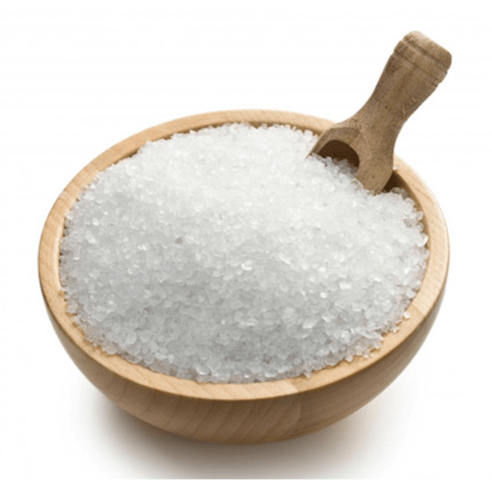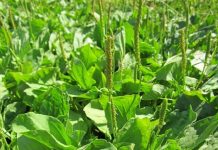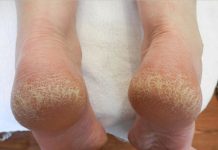I know it’s tools day, but if you think of it, so is Epsom Salt. Here’s why.
The wonders of Epsom salt have been well known for hundreds of years and, unlike other salts, has beneficial properties that can soothe the body, mind, and soul.
When applied to the skin via a hot bath or a poultice, the magnesium and sulfates in Epsom salts are readily absorbed through the skin and into the blood and distributed throughout the body. In the brain, they will raise the level of serotonin in the same way Prozac and other antidepressants work but by a different mechanism. This, in turn, helps elevate moods and leads to calm and relaxation.
Magnesium given at bedtime will lead to a nice, deep, restful sleep. In the cells of the body, magnesium helps increase ATP, which is the substance via which the cells produce energy. It will, therefore, increase energy, stamina, and endurance. Magnesium will help patients who are suffering from stress lower their high levels of adrenaline and thereby decrease the irritability induced by stress. In other words, magnesium helps you chill out and be calm.
How To Use Epsom Salt in a Bath
Fill a bathtub with the hottest water you can stand without burning yourself and then stir in two or three cups of Epsom salt. You must remain in the water for at least a half hour to get the full effect. That is how long it takes for the magnesium sulfate to penetrate your skin and enter your blood.
Note: Be careful on exiting the tub, your legs will be very rubbery due to its relaxing effect. You will feel like you are Gumby! I would also do it right before bed, you will sleep like a baby. Sore feet can be soaked in a bucket with a half cup of Epsom salt, it will soothe aching feet just as it does other muscles. It will also remove foot odors and help athlete’s foot. You can eliminate calluses by using a pumice stone after soaking your feet.
Daily baths will also help lower blood pressure, help migraine headaches, and will help relieve the bronchospasm (tight airways) of asthma. The same baths will also help eliminate harmful toxins from the body. It does this by a process known as reverse osmosis, where it actually draws these toxins out of your body through your skin.
[See: If your meds need refrigeration, read this!]Any help we can give our overworked livers in detoxifying all of the dangerous toxins that we are constantly exposed to is a big plus for your health. Your body only has a few options for dealing with toxins. It can excrete them by various means such as urine, feces, sweat, and breathing. It can package them in lipids and store them, or it can detoxify them by various biochemical means in the liver.
The longer these toxins wreak their havoc on your body the more harm they will cause. Your body is also more efficient at functioning at its peak when you are well hydrated and well-nourished with the full spectrum of minerals and trace elements, vitamins, and plants chock-full of a whole array of phytonutrients for your body.
You also need to be alkaline. Acid is not your friend; it has to be excreted by your body just like a toxin, or it has to be neutralized. Either way, it is a problem that your body has to deal with. When your body is alkaline rather than acidic, its full complement of enzymes and chemical reactions will work optimally and your body will not have to lose calcium and other minerals in an attempt to help rectify its acidity.
How To Apply Epsom Salt as a Poultice
First, you need to fill a large container with Epsom salt and add water slowly to it until you have a paste-like consistency. Then soak a small towel or rag in it and wrap it around the muscle or area of the body that is in harm from an injury. Leave it on overnight and remove it in the morning, or soak it for an hour or two.
How to Take Epsom Salt Orally
For Adults: Mix two to four level teaspoons of Epsom salt in 8 ounces of water.
For children use half this dose for ages six to twelve.
If no satisfactory bowel movements, repeat the dose in four hours. it will generally produce a very good bowel movement in thirty minutes to six hours.
Do not take Epsom salt orally if the patient has stomach pain, nausea, or vomiting or if the person is under six years old. Also, do not use it in someone with renal (kidney) failure. If several doses of it do not work, or if any rectal bleeding occurs, discontinue its use. Do not use Epsom salt as a laxative for more than one week’s time.
[See: Treating illness is not for physicians only. Not anymore.]Using Epsom Salt in Your Garden
Epsom salts will help your garden by providing magnesium to plants.
If you see your plants’ leaves fading yellow, this will help them. Mix two tablespoons of Epsom salt for every gallon of water you use. You can spray it on plants as an insecticide or water plants with it and this will help your plants absorb many of the minerals and fertilizers they need to properly grow.
I also recommend adding liberal amounts of rock dust and/or Azomite to your garden soils.
Some gardeners recommend adding a half cup of Epsom salt for every 500 square feet of garden (a 25 ft. by 20 ft. garden for example). By mixing it in water and adding it to the soil in early spring, this will keep your soil nice and “sweet” or alkaline.
Some plants require more Epsom salt than others. Nut trees such as walnuts, hazelnuts, butternuts, pecans, and others use a significant amount of magnesium and thrive on its addition to their soil. Simply add two tablespoons at the base of each fruit or nut tree in spring and several times during the growing season. is will help them absorb other vital minerals and nutrients and increase their vigor and fruit set, with no harmful side effects.
Some garden plants such as tomatoes and peppers will benefit from two tablespoons of Epsom salt added to each planting hole. You can also add it liberally by adding it to water at two tablespoons per gallon of water and either water the soil or putting it in a tank sprayer and spraying it on the plant leaves themselves through which it will be absorbed readily and utilized by the plants. Later in the growing season you may notice tomato or pepper leaves fading yellow and diminished fruit set; both can be improved by additional feedings.





















